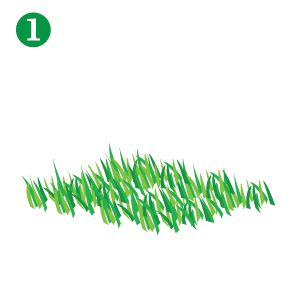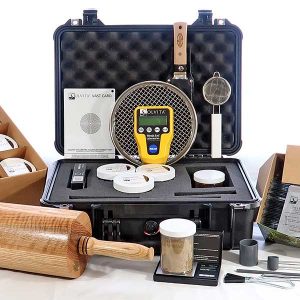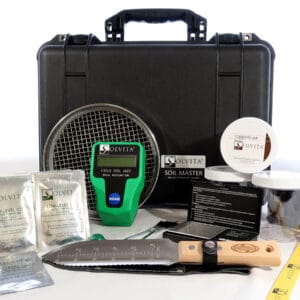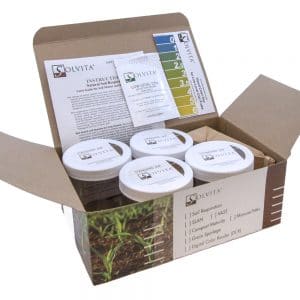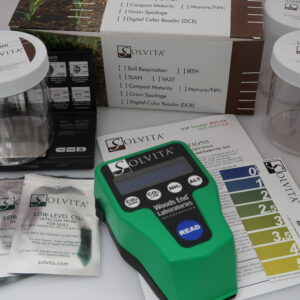Soil Respiration – Solvita C02 Field Test
Natural Soil Respiration:
The Original Basal Soil Test Method
What is Natural Soil Respiration?
Many soil labs offer our lab-based version of Solvita® (CO2-Burst) which is conducted together with regular nutrient testing. makes it possible to test soil directly in the field and is intended to be used with fresh, moist soil which represents the natural state. Measuring soil respiration with recently sampled soil that is not dried and ground can provide vital information regarding behavior under actual conditions without the disturbance and interruption of processing, drying and grinding. A detailed is provided with each kit.
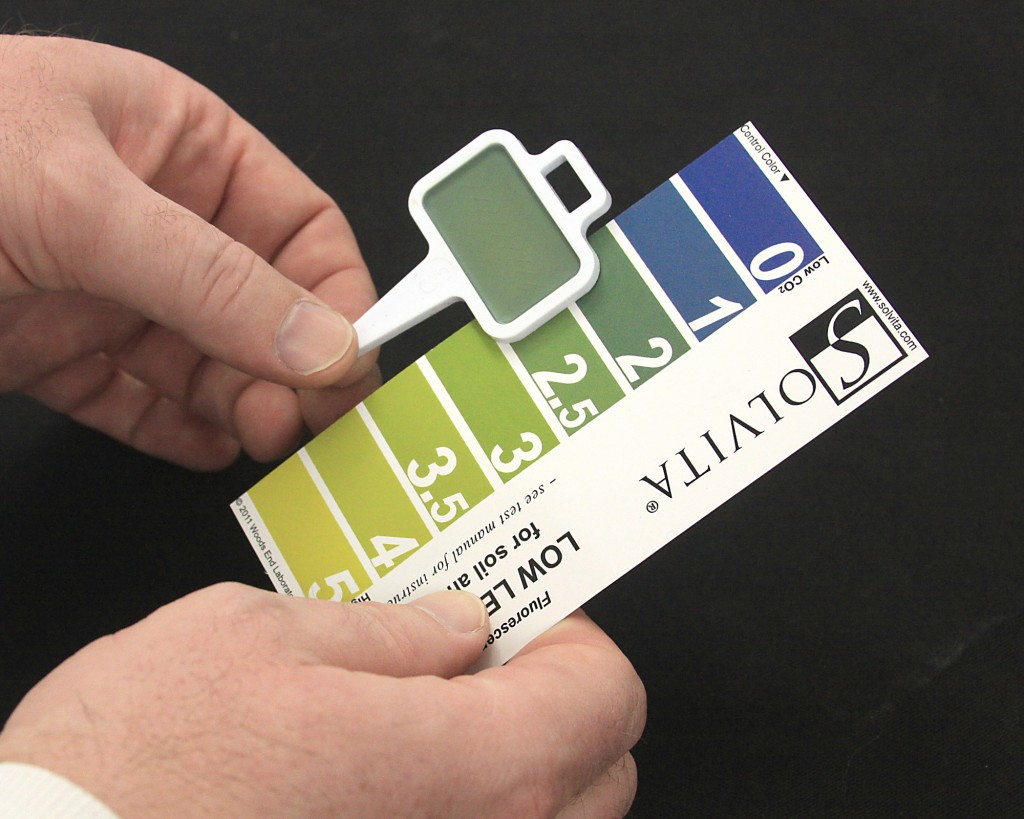
Natural Conditions and Minimally-Processed Soil Testing
Solvita Soil Field Test seeks to minimize unnatural influences due to soil sampling and soil processing known to influence biology results. To help prepare homogeneous samples without grinding, a rugged ¼” soil sieve is used to gently remove debris and stones. The also introduces use of a graduated soil knife instead of soil corer for taking samples. Corers can compress and shear moist soil in a fashion that alters the soil sample itself and adversely affects natural soil respiration. A soil thermometer is also included to enable results from room temperature testing to be “corrected” to actual field soil temperature (and vice versus). Solvita provides a convenient so that seasonality factors including soil temperature and moisture can be entered. As a result, a more realistic estimate of seasonal behavior of soil respiration and potential nutrient mineralization is available.
is a field soil test to enable testing soil respiration naturally with fresh, minimally-processed soil. The entire procedure with sampling accessories is contained in a rugged, easy to carry, field case.
How does Soil CO2 relate to Soil Health?
Soil CO2 as measured with Solvita is a unique test in which microbes themselves generate the result. (In contrast, normal soil testing relies on extractions and calibrations to interpret results.) Solvita therefore relates to soil health by providing a direct measure of soil biological response. This also explains the goal of measuring respiration with minimal soil disturbance.
Additionally, CO2 released by soil has direct significance for plant growth due to photosynthesis. Crops consume large quantities of CO2 on a daily basis which is converted into basic sugars. While it is customary to state that the CO2 comes from the air, in reality it comes originally from the soil, and thus healthy soils can deliver more CO2 to crops. Here are some interesting facts:
- The quantity of CO2 which crops take up compares closely to the amount of CO2 which a soil is capable of producing.
- If plants don’t have enough CO2 available for assimilation, then CO2 could be a “limiting nutrient.”
The Lundegårdh* Model
- PLANTS may require up to 150 lbs./acre of CO2 per day
- SOIL may supply between 30 lb./acre to 200 lb./acre CO2
- ROOTS: Root respiration also supplies more CO2 to the soil system
- AIR: Without soil sources, 10 cubic acres of air are needed to satisfy the CO2 for 1 acre of wheat
- ALL: Under healthy conditions, the soil-plant cycle is a unified and self-contained system.
* Henrik G. Lundegårdh, Swedish Botanist, 1888-1969
Historical Facts about CO2 Respiration
Agriculturalists first seriously quantified the relationship between crop productivity and soil CO2 levels in the early 1920s. Following WWII, the emphasis was on using available, cheap inorganic fertilizers to increase crop yields. An unfortunate result of this is that excellent early studies on the linkage of plants and soil respiration – and soil health – were overlooked until recently.

